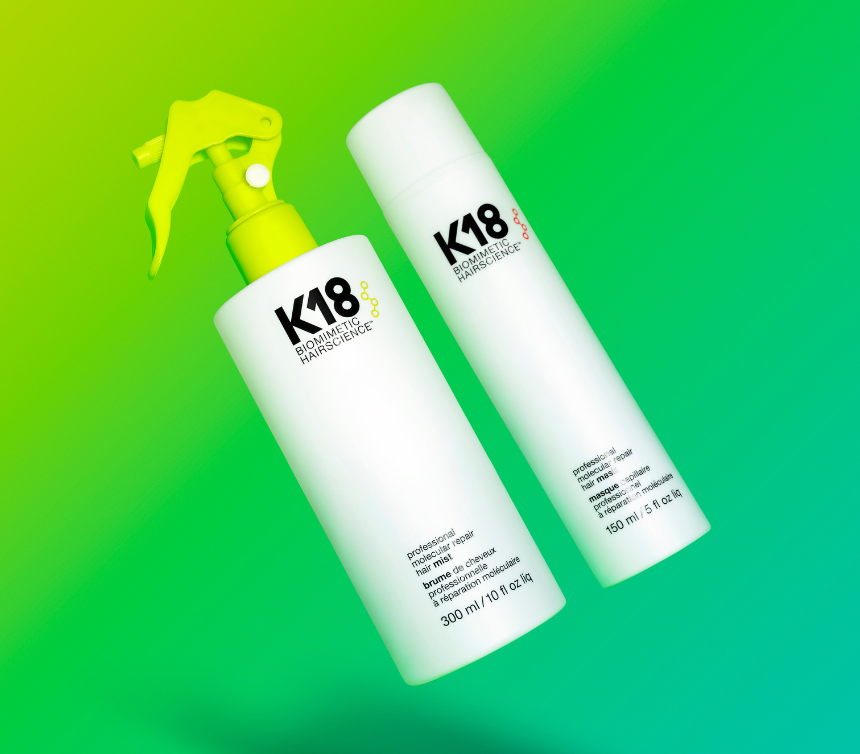There’s no one-size-fits-all approach to cleansing—but there are science-backed guidelines.
Hair expression is highly individual, and so are washing routines. Your ideal schedule will largely depend on various factors, including sebum production rate, hair type, and lifestyle (think: physical activity, pollutant exposure, and styling frequency).
For those on the oiler side or avid exercisers, you may find yourself washing more often. If you have chemically treated hair, dry hair, damaged hair, or tightly curled hair, then less frequent washing helps reduce dryness, which in turn helps reduce breakage and hair loss.
Ready to find a schedule that will keep both you and your hair thriving? We’re here to help.
cleansing pros
The benefits of washing your hair are obvious. Not only does shampooing improve the look and feel of hair, but it also helps remove sebum, product buildup, and pollutants. “[These] can harm the scalp and hair fibers if left in contact for prolonged periods,” says Meagan Schlapp, R&D chemist at K18.
Clean hair also allows hair treatments like the K18 leave-in molecular repair mask to work more effectively.
Going too long without washing can have negative effects including dandruff, ingrown hairs, odor from trapped oil, and itchiness. Washing your hair is good for your hair—it's overwashing you want to avoid.
cleansing cons
Too frequent exposure to water puts hair in a more vulnerable state, says Schlapp.
“Wet hair has internal hydrogen bonds disrupted and can stretch and break with less force,” she says.
Proteins in hair are in an optimal state around a pH of 5, which is considered slightly acidic. For reference, the pH of tap water ranges from 6.5 to 9.5 and can contain metal ions like divalent calcium and magnesium (hard water minerals) which impact hair texture as well as trace levels of transition metals like copper, iron, nickel, lead, and others that over time can compromise hair’s structure and strength.
Additionally, not all hair cleansing agents are formulated equally. For example, conditioning ingredients are commonly found in many commercial shampoos. While these ingredients may make hair soft and smooth to the touch, the reality is that they mask the sometimes harsh texture of clean hair (if frequently dyed or styled)--and may prevent the K18 peptide from making its way into the hair fiber cortex to repair internal structural damage. Conditioning ingredients support the appearance and feel of hair and offer protection against mechanical damage by coating strands, but don’t address underlying damage.
That means that when you wash, your shampoo choice matters.
“We champion a less-is-more approach to formulation, where every ingredient is intentionally selected and earns its place in the formula,” says Schlapp. “So ‘kitchen sink’ formulas with crazy long ingredient lists very likely don’t have each ingredient at a level to provide a real, tangible effect.”
so, how do you wash your hair, and how often?
The right wash schedule is key to hair health, as well as using a shampoo with a more acidic pH to help counteract this alkaline pH environment and minimize the net negative charge on hair proteins.
K18 approaches hair cleansing through intentional and minimalist formulation. You won’t find unnecessary or potentially harmful ingredients that may reduce your hair’s pH balance.
“We always advise selecting formulas that have precisely tuned pH—this is a key function of our shampoos,” says Schlapp of K18’s PEPTIDE PREP™ detox shampoo and DAMAGE SHIELD pH protective shampoo.
Using a pH-optimized shampoo also helps decrease cuticle swelling, which helps reduce protein loss, preserve color, minimize electrostatic repulsion (aka static), and improve hair’s overall health.

The detox shampoo has been clinically proven to remove 95% sebum, 99% product buildup, and 76% copper in a single wash. We recommend using it to clarify excess buildup weekly, especially on K18 mask days.
DAMAGE SHIELD shampoo helps reduce excess swelling of the hair cuticle to minimize tangles and frizz and is a certified microbiome-friendly formula that removes dirt and oil without disrupting the scalp’s natural protective barrier. It’s gentle enough even for daily use.
Now when it comes to how to wash your hair, Schlapp advises using a shampoo with a low pH, and being gentle with cleansing and scrubbing.
“Only wash as often as you personally need to, and extend when possible and reasonable.”
Want to extend your clean for up to 3 days*? Meet NEW AirWash™ dry shampoo. Powered by revolutionary odorBIND™ smart-release biotechnology, our NEW non-aerosol, scalp-friendly formula doesn’t mask odors—it’s scientifically proven to recognize, suspend, and eliminate them and replace odor with a subtle, easily layered fragrance.
Translucent microbeads (made from naturally occurring, mineral-based silica—not plastics) sponge up excess oil without leaving white cast or starchy buildup behind, so all hair types and colors can get an extended clean for up to 3 days and prioritize scalp health at the same time.
For many, two to three days is the maximum time between washes. However, by day five to seven, you may notice the signs of necessary cleansing when your hair becomes visibly oily, you notice dandruff or buildup, or your scalp begins to itch. When that happens—hop in the shower or use AirWash™.



